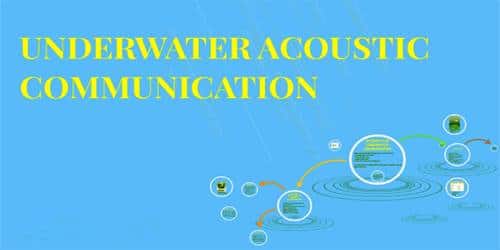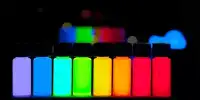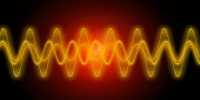Underwater acoustic communication is sending and receiving for underwater massages. In the application of acoustic communication below the water, higher carrier frequencies support a wider bandwidth, which is desirable to achieve higher data rates. There are several ways to recruit these national contacts, but using hydrophones is the most common. At the same time, higher frequencies lead to shorter communication ranges due to stronger focus. In the past decades, much effort has been devoted to exploring acoustic communications between 8-50 kHz heart within a frequency band of a few kilometers or more. Variables, small available bandwidth, and powerful signal shortening during channel multi-path propagation, especially over long distances, such as underwater communication are difficult.
Underwater wireless communications are established using acoustic signals at distances of more than 100 meters. Acoustic signals propagate as pressure waves, whose energy absorption limits the available bandwidth. As a result, existing technology provides bit rates on the order of several kilobytes per second to perform a range of several kilometers. Compared to terrestrial communication, submergence contact information is lower because it uses acoustic waves instead of electronic magnetic waves. Additional challenges are presented by multipath propagation that is caused by frequency selection, random period variations and Doppler effects at low speeds (1500 m / s). Recent advances in multicarrier acoustic communication are also presented, along with techniques for channel equations in single-carrier systems.
Although multiple-input multiple-output (MIMO) underwater acoustic (UWA) communications have been closely investigated over the past years, existing works have largely focused on the open water environment. UWA communications have been complicated by the combined effect of multipath propagation and high temporal and spatial variability in channel conditions. Until recently, the design of communication systems relied mostly on the use of non-coherent modulation techniques. However, in order to achieve high data rates in critically bandwidth UWA channels, bandwidth-efficient modulation techniques must be considered together with array processing to absorb local manifold variations. There is no reporting of MIMO acoustic contact in low ice environments. This paper presents the results of a recent MIMO Acoustic Communication Test that took place in the Gulf of Bahia in the winter.
At the beginning of the 20th century, some vessels communicated with submerged water bells, the system being competitive with the primitive Maritime Radiation Services at that time. It appears that this common receiver is capable of realizing strong performance using less hydropower without the explicit use of complex co-channel interference cancellation algorithms such as parallel interference cancellation or serial interference. Subsequently, the Fessenden motions allowed contact with the submarine.













